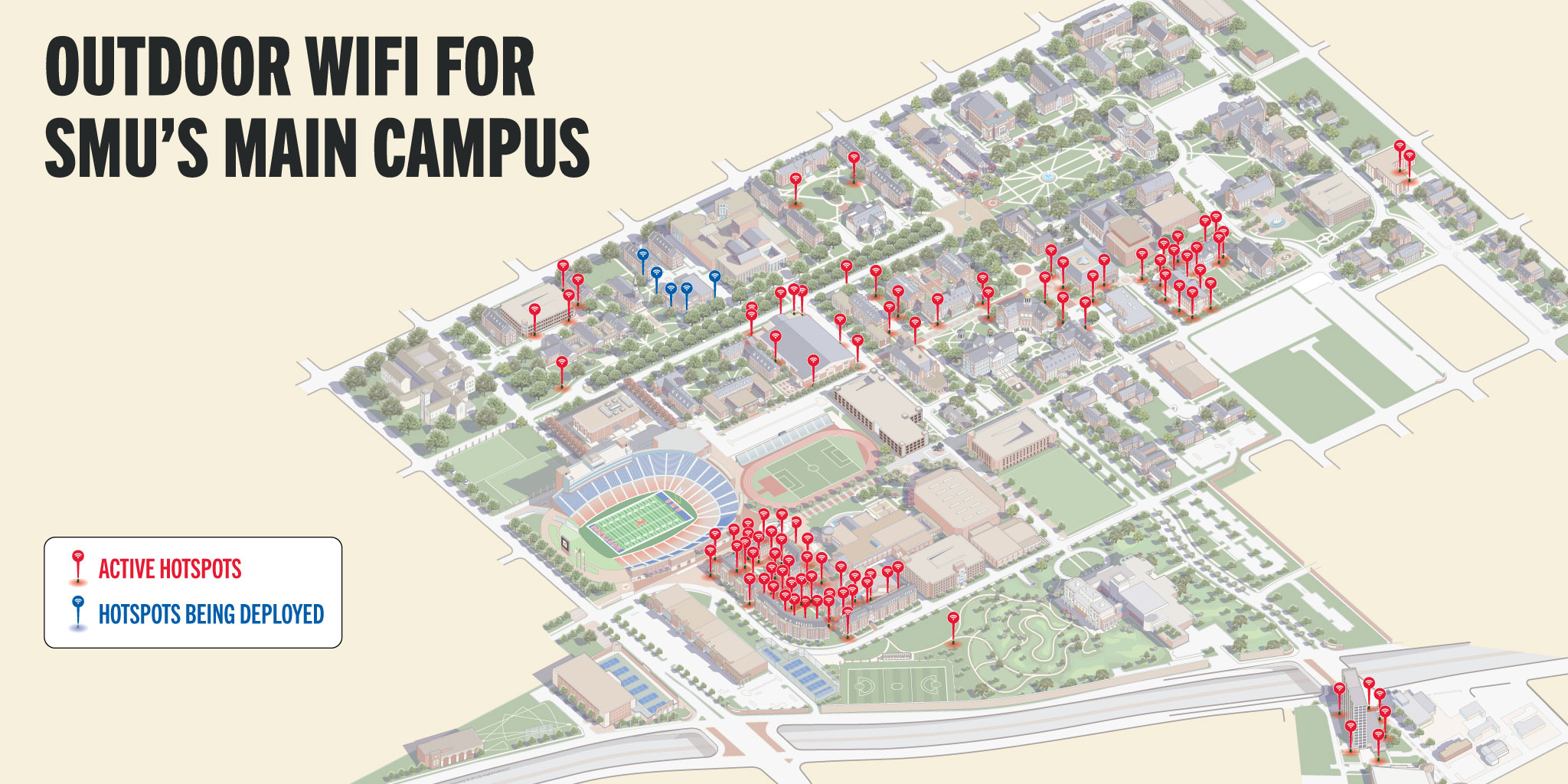Outdoor Wi-Fi Locations

Example for illustrative purposes only. Please see the SMU Interactive Map for latest information.
SMU Interactive Map with Wi-Fi Hotspots

There are multiple Wi-Fi networks on campus. These wireless networks are centrally managed by OIT.
PerunaNet is the preferred secure wireless network available only to SMU faculty, staff, and students, with an active SMU ID and password.
SMU_Guest offers both long-term accounts as well as short-term, self-provisioned accounts.
eduroam is available in all locations on campus.
eduroam is a secure worldwide federated wireless network for individuals in higher education or research environments. This large-scale collaboration between the hundreds of institutions allows individuals to authenticate to the “eduroam” network using their university account and password wherever this network is broadcasting.
For example, an SMU faculty, staff, or student could access the eduroam network at another university by authenticating using their SMU credentials. This collaboration also allows visiting scholars and researchers to connect to our eduroam Wi-Fi using their university credentials. To authenticate, a user should use their primary email address, such as cuser@smu.edu, for the username.
eduroam is a secured guest wireless network that has limited access to recourses on the SMU Campus. To have full access to campus resources while on campus, SMU Faculty, Staff, and students are encouraged to use PerunaNet.
To see the map of locations where eduroam is available, please visit eduroam.org/where.
AdobeNet is the wireless network available only on the SMU-in-Taos campus. Individuals with an SMU ID and password cannot authenticate to this network using those credentials. Account provisioning is done by Taos IT Support Personnel.
Instructions for Connecting to the SMU Wireless Networks

Example for illustrative purposes only. Please see the SMU Interactive Map for latest information.
SMU Interactive Map with Wi-Fi Hotspots
SMU's singular approach to integrating rigorous learning with hands-on experience will prepare you to achieve your educational goals and expand your world in ways you never imagined. Ours is a community of people forging their own paths. We'd like to help you shape yours.
Plan your visit